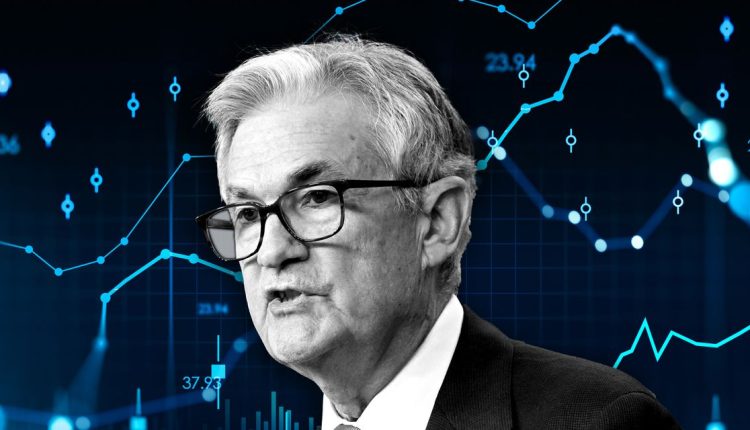The past six weeks have left investors with more questions than answers about the outlook for U.S. monetary policy and, by extension, financial markets.
And although the Federal Reserve is expected to leave its policy interest rates on hold Wednesday, Chairman Jerome Powell could still rattle markets as he’s probed for clues about the central bank’s thinking.
Powell’s statement is expected to hew to what he said at the Jackson Hole, Wyoming, symposium in August and before that, during the central bank’s July press conference, but market analysts say the question-and-answer session with reporters and the updated “dot plot” of policy makers projections for interest rates could potentially furnish market-moving news.
See: U.S. economy is trending in the Fed’s direction, so expect Powell to tread carefully next week
“Just because this meeting isn’t widely considered to be ‘in play’ doesn’t mean it is insignificant,” said Steve Sosnick, chief strategist at Interactive Brokers, during a phone interview with MarketWatch.
“The fact is, the Vix is relatively low. That indicates a very sanguine, if not complacent market. And a complacent market can sometimes be more susceptible to a negative shock.”
The Cboe Volatility Index
VIX,
better known as “the Vix” or Wall Street’s “fear gauge,” finished below 14 on Friday, even as the Nasdaq Composite
COMP
and S&P 500
SPX
logged back-to-back weekly losses. Markets have seesawed recently as inflation has reaccelerated while the U.S. labor market and broader economy have slowed.
What will investors be looking for, exactly? Presently, investors expect the Fed could start cutting interest rates again by the middle of next year. Anything that could disabuse them of this notion could undercut U.S. stocks while boosting Treasury yields and the U.S. dollar, analysts said.
Liz Ann Sonders, chief market strategist at Schwab, said clues could potentially surface during the Q&A at the post-meeting press conference, which often has more of an impact on markets than Powell’s statement.
“It is that 45 minutes to an hour that tends to be more market moving,” Sonders said during a phone interview with MarketWatch. “It is what they say about higher for longer and expectations around rate cuts in 2024, and whether Powell pushes back against that.”
Since the beginning of August, more data has emerged to suggest that the U.S. economy might finally be starting to respond to the pressure from the Federal Reserve’s most aggressive campaign of interest-rate hikes since the 1980s. Corporate and personal bankruptcies have climbed.
See: Bankruptcies spiked in August — the post-COVID rebound ‘is becoming a reality’
There have also been indications that the torrid postpandemic labor market might be starting to cool. The Labor Department’s monthly jobs report showed fewer than 200,000 jobs were created in August, while figures from the prior two months were also revised lower, and the unemployment rate ticked higher to 3.8%.
At the same time, consumer-price inflation has accelerated for two months in a row. Some on Wall Street have started to worry about stagflation, and financial markets are now pricing in about even odds that the Fed will leave interest rates on hold.
A report earlier this week showed consumer prices rose 3.7% over the 12 months through August, while the rise for the month was 0.6%, the biggest increase in 14 months.
Adding to the complicated picture, the resumption of student loan payments in October has revived concerns about the consumer despite relatively robust retail-sales data released earlier this week, while an auto worker strike involving all of the “Big Three” U.S. carmakers and the threat of a government shutdown are also sowing fears about a hit to the economy.
“The triple threat from the resumption of student loan payments, a government shutdown and a strike by auto union workers could significantly weigh on GDP growth in Q4,” said EY Chief Economist Gregory Daco in emailed commentary.
Powell could be asked to weigh in on any or all of these. He also could be asked to directly address investors’ expectations for the timing of the Fed’s initial rate cut of the cycle. Expectations for a policy pivot already proved premature last summer, which caused a brief but powerful bear-market rally to fizzle.
A repeat of this could again create problems for stocks, Sosnick said.
“Let’s see if the Fed agrees with the market’s assumptions about rate cuts,” he added.
Traders expect the central bank to keep interest rates on hold Wednesday, with market-based odds seeing a pause as a virtual certainty, according to the CME’s FedWatch tool, which measures expectations based on trading in Fed funds futures. Expectations for another hike later this year are roughly split.
See also: 4 things to watch for at next week’s Fed policy meeting
Read the full article here

